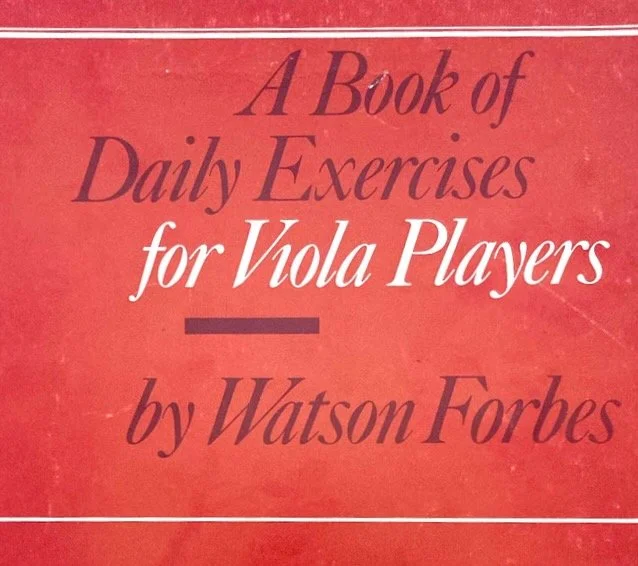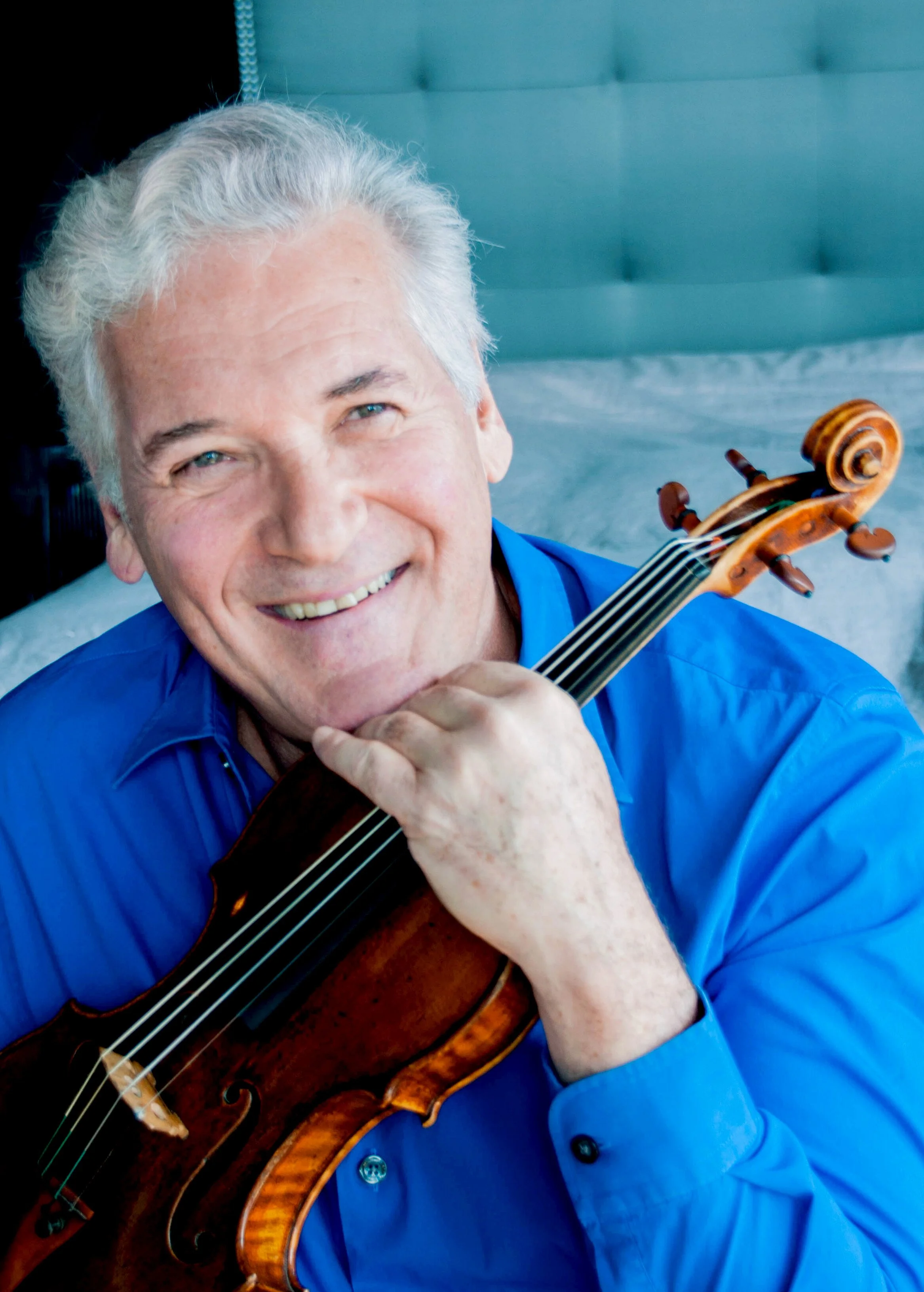Carol Rodland on Musicality, Color & Daily Habits
In a masterclass for String Gym earlier this year, Juilliard viola professor Carol Rodland generously shared her ideas on a range of topics, from dealing with performance anxiety to staying in shape on the instrument. In addition to the speed with which she was able to cover so many subjects in depth, what struck me about her teaching was her vivid analogies and catchphrases. These were at once memorable, imaginative and expert at getting the student straight to the pedagogical point: I found myself adopting phrases like "you don't have to call the fire department on every note" with my own students! If you're unfamiliar with Rodland’s teaching you should check out this YouTube playlist or read her sections in The Karen Tuttle Legacy book.
To Counter Nerves, Focus on Musicality
After performing Weber's Andante and Hungarian Rondo, the first student in the class asked Rodland for suggestions on how to get past her performance anxiety. As general advice for dealing with nerves, Rodland suggested adopting a breathwork practice, discussing several breathing frameworks including box breathing and 4-7-8 breathing.
Her other suggestions for countering nerves centered around clarifying musical ideas and concentrating on executing them while performing: "...the more you can focus on what you want, the more it's about the music, and less about you." In other words, the clearer and more detailed your musical ideas, the easier it is to focus past internal distractions, ensuring music remains the object of your focus, rather than your inner monologue.
This echoed LA Phil Principal Cellist Robert DeMaine's words to think like a fighter pilot, as well as a discussion in this podcast (starting at 1:44:00) regarding how the analytical side of our brain can cripple the creative side when we're under stress.
Rodland emphasized the importance of having a clear “process cue,” a term borrowed from performance psychologist, Noa Kageyama. To Rodland, a process cue is a succinct character description to clarify the emotional content of what you are about to play. She also recommended having a “movement” cue, which serves to define your pulse/tempo for the section you’re about to play:
“Feel the tempo and the big pulse deeply in the body before beginning to play. Imagining, hearing, and truly feeling the character and pulse before you start is so helpful! Grounding yourself with all of that also keeps you from rushing when nervous.”
Since Weber was a pivotal figure in early Romantic opera, Rodland recommended not only creating a story for the piece, but also asked the student to imagine which kind of singer (soprano, mezzo, tenor, bass) was the lead at any moment in the plot. This emphasis on contrast was a theme throughout the class. To create more variety and interest within a phrase, Rodland advocated making specific decisions about the hierarchy of notes within the phrase. In this vein, she suggested asking yourself, "What's the most expensive note?"
“It’s also important to remember that every note has its own shape and duration, and that you want to shape every gesture elegantly and expressively, feeling and filling every note and the spaces between the notes emotionally. You want to be very clear about the ‘highs' and ‘lows’.”
To bring out these expensive notes she recommended "releasing your arm weight into the string for more depth of sound and for your upper dynamic range. Experiment with gravity to help expand your range of expression." If a note needs more emPHasis release more weight into the point of contact. She advocated thinking of weight in pounds, rather than more general terms like "heavy" or "light," allowing for more specificity when making these choices. On the flip side, highlighting expensive notes requires LESS emphasis on the cheaper ones, or in Rodland's words, "some notes play themselves."
Rodland pointed out that unequal bow distribution is also necessary for clear phrasing: if all the notes have the same bow speed, there is no contour or contrast in the phrase!
This Habeneck exercise (hat tip to Ralph Fielding for this one) is useful for visualizing and practicing unequal bow speed distribution on one note:
Elemental Colors
I have a vivid memory of being 16 years-old, rehearsing Beethoven's "Eyeglasses Duet" with an excellent young cellist when he stopped mid-phrase and asked nonchalantly if we could change color for the section we were about to play. Change color? What was he talking about?? I was too proud to admit I had no clue what he meant, so I just played a little softer, and he seemed satisfied.
Since that moment I've always been on the lookout for ways to understand how to play with more color, and how to explain it to my students. Rodland had a simple and vivid framework for thinking about categories of color in the sound which employed the four elements: Earth, Wind, Water and Fire. As she explained them, Earth and Fire sounds have more "density" (i.e. a combo of more weight, closer to bridge, slower bow speed). This contrasts with the lighter sounds of Wind and Water, which are generated further away from the bridge with more bow speed and less weight.
This color framework is easier to show than to tell! Here's a short video of me practicing scales with the different elements as I imagine them:
Hopefully it’s clear which element is which! (I was going for Earth, Fire, Wind and Water!)
In the masterclass, Rodland coached a student on how he could use Earth or Fire sounds on structural bass notes in a Bach Prelude, while using Wind or Water sounds for transitional notes connecting those harmonic mileposts. The student caught on to this idea easily, playing with more contrast while highlighting the harmonic progressions and subtle voicing changes that are a hallmark of Bach's music.
I found this to be such a simple and straightforward way to access color, add contrast and stimulate imagination in playing! After sharing the framework with my own students, suggesting that a passage should be “watery” or “earthier” has become an easy cue for them to change their sound.
The Hand: A Daily Self-Care Routine
Towards the end of the class, Rodland shared the daily routine she recommends to her students to stay healthy as violists. There are five habits in her routine, which she calls "The Hand." The five “fingers” of The Hand are:
Exercise: cardio at least 30 mins per day 5 times per week and some sort of regular core work that also involves balance and breathing, such as Pilates, Yoga or Tai Chi
Sufficient and quality sleep
Healthy and balanced diet
Mindfulness Practice
Comprehensive instrumental warm-up
I appreciate this list greatly, as it’s clearly not merely for staying in shape on the instrument, but is instead a holistic set of habits crafted for overall wellness as a musician. Musicians are athletes, we perform with our bodies. To perform at our best we must ensure our body (and mind) are well-maintained, just as athletes do! The first four habits in this routine provide a strong base to support a healthy musician throughout their playing life.
I was especially happy to see mindfulness practice on this list, as it has been critical to my own health as a musician. While it has been especially useful during stressful periods of my own life (e.g. having young children!), on a more mundane level, constant context switching is a huge challenge to attention in our current culture. Having this ritual at the beginning of a practice session helps counteract the hyperactive hive mind, while simultaneously focusing attention and training self-calm.
Rodland recommends mindfulness practice for 5-10 minutes before work on the instrument. At Juilliard, students have free access to the Headspace app. She recommended Headspace (or the Calm app) for those who want or need guidance in their mindfulness practice, but she is agnostic on the choice of a particular mindfulness practice, stressing it should be tailored to the person.
The last finger of The Hand, the instrumental warm-up, is comprehensive and includes a number of fundamental concepts needed to stay in shape on the instrument. Rodland emphasized that in addition to overall basic “viola physical fitness,” the warm-up should also include exercises to address each player's own particular technical or musical challenges on the instrument.
Rodland suggested using a mix of scales and etudes to practice each individual concept outlined below, but she also encouraged players to find passages from their own repertoire to explore the concepts in a musical setting. For the concepts where she didn't mention a particular etude to practice I've added my own suggestions in italics. Where helpful, I’ve added links to videos that clarify concepts or to downloads for lesser-known etudes.
Intonation
Working on listening both harmonically for diatonically based music and intervallically for music of the 20th and 21st centuries
Exercises: listening to sympathetic vibrations of open strings, tuning to pitches in a passage to a drone
Finger Action
Exercises: Sevcik Op. 1, Schradieck, Kreutzer #9
Shifting
Different types and speeds
Exercises: Kreutzer #11, Sevcik Op. 8, Arpeggios
Vibrato
Slow motion and with metronome for speed
Practice with various widths
Three-part Bow on open string
What adjustments do you have to make with 3 variables to maintain an even sound in each part of the bow?
Repull practice
Gluey Bow Changes
Exercises: Kreutzer #1, Dounis Daily Dozen bow exercises
String Crossings
In all parts of the bow
Exercises: Dounis Daily Dozen bow exercises, Kreutzer #13, Casorti #1-3
Basic Bow Strokes
Collé
Martele = Collé + Follow Through
Detache
Ricochet
3 kinds of Spiccato
Heavy (lower half, like you might use in Wagner)
Brushy (lighter, like you might use in Classical playing)
Sautille
Exercises: Kreutzer #2,3 & 8; Sevcik Op. 2
For convenience, I’ve also made the warm-up into a separate PDF, which you can download here.
Two Rules of Viola Playing
To close I'll leave you with Rodland’s two rules for viola playing:
1) It has to sound good
2) It has to feel good
As she mused, "You have the best sound when you're feeling the most comfortable physically."
I love the simplicity of this maxim: there's so much to be gained simply from focusing on the beauty of our sound and continually striving to listen more deeply. If, however, we listen to our bodies with the same depth of awareness, searching for ways to play with more ease and physical comfort as we produce a beautiful sound, the results can be transformative. If “The Hand” comprise the daily habits which lead to a long, healthy and fruitful musical life, then these two rules constitute a simple and powerful philosophy for supporting those habits every time you pick up the instrument.










